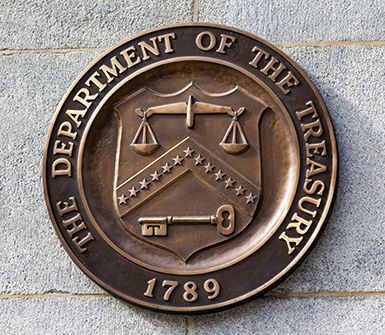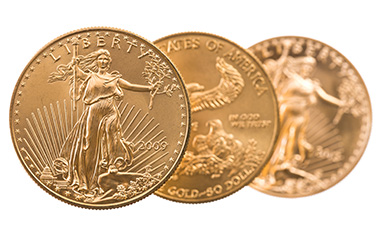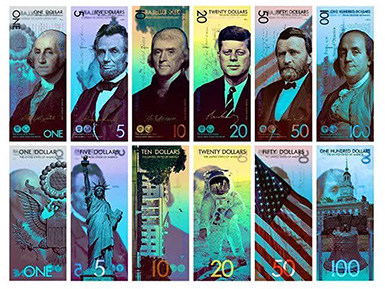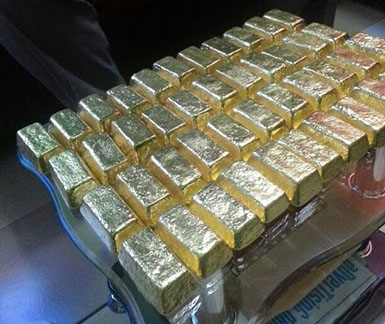
(Bloomberg Opinion) -- The economic debate of the day centers on whether the cure of an economic shutdown is worse than the disease of the virus. Similarly, we need to ask if the cure of the Federal Reserve getting so deeply into corporate bonds, asset-backed securities, commercial paper, and exchange-traded funds is worse than the disease seizing financial markets. It may be.
In just these past few weeks, the Fed has cut rates by 150 basis points to near zero and run through its entire 2008 crisis handbook. That wasn’t enough to calm markets, though — so the central bank also announced $1 trillion a day in repurchase agreements and unlimited quantitative easing, which includes a hard-to-understand $625 billion of bond buying a week going forward. At this rate, the Fed will own two-thirds of the Treasury market in a year.
But it’s the alphabet soup of new programs that deserve special consideration, as they could have profound long-term consequences for the functioning of the Fed and the allocation of capital in financial markets. Specifically, these are:
CPFF (Commercial Paper Funding Facility) – buying commercial paper from the issuer. PMCCF (Primary Market Corporate Credit Facility) – buying corporate bonds from the issuer. TALF (Term Asset-Backed Securities Loan Facility) – funding backstop for asset-backed securities. SMCCF (Secondary Market Corporate Credit Facility) – buying corporate bonds and bond ETFs in the secondary market. MSBLP (Main Street Business Lending Program) – Details are to come, but it will lend to eligible small and
medium-size businesses, complementing efforts by the Small Business Association.
To put it bluntly, the Fed isn’t allowed to do any of this. The central bank is only allowed to purchase or lend against securities that have government guarantee. This includes Treasury securities, agency mortgage-backed securities and the debt issued by Fannie Mae and Freddie Mac. An argument can be made that can also include municipal securities, but nothing in the laundry list above.
So how can they do this? The Fed will finance a special purpose vehicle (SPV) for each acronym to conduct these operations. The Treasury, using the Exchange Stabilization Fund, will make an equity investment in each SPV and be in a “first loss” position. What does this mean? In essence, the Treasury, not the Fed, is buying all these securities and backstopping of loans; the Fed is acting as banker and providing financing. The Fed hired BlackRock Inc. to purchase these securities and handle
the administration of the SPVs on behalf of the owner, the Treasury.
In other words, the federal government is nationalizing large swaths of the financial markets. The Fed is providing the money to do it. BlackRock will be doing the trades.
This scheme essentially merges the Federal Reserve Bank and Treasury into one organization. So, meet your new Fed chairman, Donald J. Trump.
In 2008 when something similar was done, it was on a smaller scale. Since few understood it, the Bush and Obama administrations ceded total control of those acronym programs to then-Fed Chairman Ben Bernanke. He unwound them at the first available opportunity. But now, 12 years later, we have a much better understanding of how they work. And we have a president who has made it very clear how displeased he is that central bankers haven’t used their considerable power to force the Dow Jones
Industrial Average at least 10,000 points higher, something he has complained about many times before the pandemic hit.
When the Fed was rightly alarmed by the current dysfunction in the fixed-income markets, they felt they needed to act. This was the correct thought. But, to get the authority to stabilize these “private” markets, central bankers needed the Treasury to agree to nationalize (own) them so they could provide the funds to do it.
In effect, the Fed is giving the Treasury access to its printing press. This means that, in the extreme, the administration would be free to use its control, not the Fed’s control, of these SPVs to instruct the Fed to print more money so it could buy securities and hand out loans in an effort to ramp financial markets higher going into the election. Why stop there? Should Trump win re-election, he could try to use these SPVs to get those 10,000 Dow Jones points he feels the Fed has denied
everyone.
If these acronym programs were abused as I describe, they might indeed force markets higher than valuation warrants. But it would come with a heavy price. Investors would be deprived of the necessary market signals that freely traded capital markets offer to aid in the efficient allocation of capital. Malinvestment would be rampant. It also could force private sector players to leave as the government’s heavy hand makes operating in “controlled” markets uneconomic. This has already occurred
in the U.S. federal funds market and the government bond market in Japan.
Fed Chair Jerome Powell needs to tread carefully indeed to ensure his cure isn’t worse than the disease.
This column does not necessarily reflect the opinion of Bloomberg LP and its owners.
Jim Bianco is the President and founder of Bianco Research, a provider of data-driven insights into the global economy and financial markets. He may have a stake in the areas he writes about.
Source: Yahoo Finance
|





 About us
About us